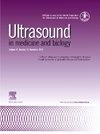Therapeutic Effects of Different Ultrasound Intensity Stimulation on Brown Adipose Tissue for the Treatment of Type 2 Diabetes
IF 2.4
3区 医学
Q2 ACOUSTICS
引用次数: 0
Abstract
Type 2 diabetes (T2D) is a persistent illness that has a high incidence rate. Still, there is no conclusive evidence on effectively improving blood sugar levels in patients through physical therapy. This study examined the regulatory effects of different intensities of low-intensity pulsed ultrasound (LIPUS) on T2D by stimulating brown adipose tissue (BAT). Eight-week-old C57BL/6J mice were divided into six groups (n = 10 per group): Control sham (C-Sham), Control-LIPUS (C-LIPUS), T2D-sham (T2D-Sham), T2D groups treated with LIPUS at spatial average-temporal-average intensity (Isata) of 60mW/cm² (T2D-L-60), 80mW/cm² (T2D-L-80), and 100mW/cm² (T2D-L-100). T2D models were induced by intraperitoneal injection of 40 mg/kg streptozotocin (STZ) three times after 12 wks of high-fat diet (HFD). The T2D-LIPUS group received LIPUS stimulation for 20 minutes per day for 6 weeks. The LIPUS stimulation had a duty cycle of 20%, a frequency of 1 MHz, and Isata of 60mW/cm², 80mW/cm², 100mW/cm². Subsequently, glucose tolerance tests (GTT) and insulin tolerance tests (ITT) were performed, and body fat content in mice was analyzed using nuclear magnetic resonance (NMR). Metabolic changes were monitored using metabolic cages. The results indicated that 80mW/cm² intensity level significantly improved glucose tolerance, insulin sensitivity, and metabolic function after LIPUS exposure. Significant reductions in body fat content and enhanced thermogenesis were observed, highlighting the potential of LIPUS in T2D management. This provides the basis for the dose study of LIPUS in the treatment of T2D.
不同超声强度刺激褐色脂肪组织治疗2型糖尿病的疗效观察。
2型糖尿病(T2D)是一种高发病率的持续性疾病。不过,目前还没有确凿的证据表明,物理疗法能有效改善患者的血糖水平。本研究探讨了不同强度的低强度脉冲超声(LIPUS)通过刺激棕色脂肪组织(BAT)对T2D的调节作用。8周龄C57BL/6J小鼠分为6组(每组n = 10):对照假手术组(C-Sham)、对照LIPUS组(C-LIPUS)、T2D假手术组(T2D- sham)、空间平均-时间-平均强度(Isata)分别为60mW/cm²(T2D- l- 60)、80mW/cm²(T2D- l- 80)和100mW/cm²(T2D- l- 100)的LIPUS组。在高脂饮食(HFD) 12周后,腹腔注射链脲佐菌素(STZ) 40 mg/kg,共3次,形成T2D模型。T2D-LIPUS组给予LIPUS刺激,每天20分钟,连续6周。LIPUS刺激的占空比为20%,频率为1 MHz, Isata为60mW/cm²,80mW/cm²,100mW/cm²。随后进行葡萄糖耐量试验(GTT)和胰岛素耐量试验(ITT),并用核磁共振(NMR)分析小鼠体脂含量。利用代谢笼监测代谢变化。结果表明,80mW/cm²强度水平显著改善LIPUS暴露后的葡萄糖耐量、胰岛素敏感性和代谢功能。观察到体脂含量显著降低,生热作用增强,突出了LIPUS在T2D治疗中的潜力。这为LIPUS治疗T2D的剂量研究提供了依据。
本文章由计算机程序翻译,如有差异,请以英文原文为准。
求助全文
约1分钟内获得全文
求助全文
来源期刊
CiteScore
6.20
自引率
6.90%
发文量
325
审稿时长
70 days
期刊介绍:
Ultrasound in Medicine and Biology is the official journal of the World Federation for Ultrasound in Medicine and Biology. The journal publishes original contributions that demonstrate a novel application of an existing ultrasound technology in clinical diagnostic, interventional and therapeutic applications, new and improved clinical techniques, the physics, engineering and technology of ultrasound in medicine and biology, and the interactions between ultrasound and biological systems, including bioeffects. Papers that simply utilize standard diagnostic ultrasound as a measuring tool will be considered out of scope. Extended critical reviews of subjects of contemporary interest in the field are also published, in addition to occasional editorial articles, clinical and technical notes, book reviews, letters to the editor and a calendar of forthcoming meetings. It is the aim of the journal fully to meet the information and publication requirements of the clinicians, scientists, engineers and other professionals who constitute the biomedical ultrasonic community.

 求助内容:
求助内容: 应助结果提醒方式:
应助结果提醒方式:


